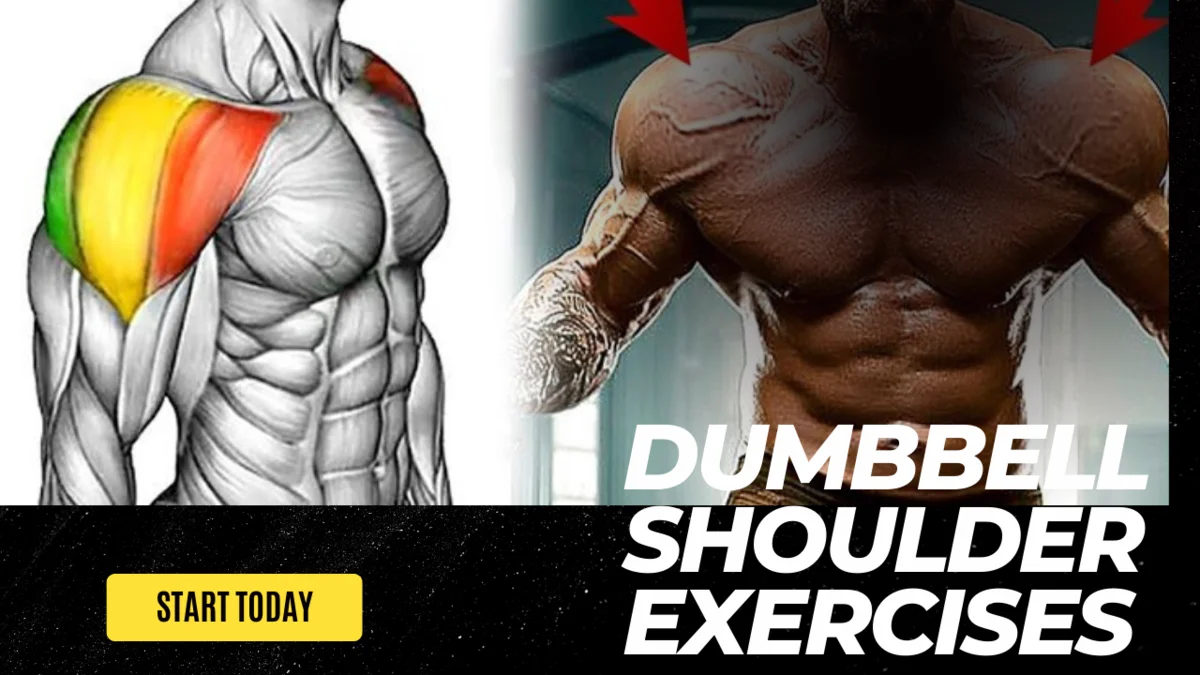Dive into the world of dumbbell shoulder exercises and experience a transformative journey. Sculpt and tone your shoulders with precision, as these exercises offer a powerful blend of strength, definition, and functional fitness. Embrace the attractive benefits of enhanced shoulder aesthetics, improved posture, and increased upper body strength. Elevate your workout routine and enjoy the exclusive advantages that come with mastering Dumbbell Shoulder Exercises for a fitter, more confident you.
Dumbbell Shoulder Exercises benefits
- Enhanced Shoulder Definition: Dumbbell shoulder exercises target multiple muscle groups, promoting a sculpted and defined appearance.
- Increased Upper Body Strength: Regular inclusion of dumbbell shoulder exercises contributes to overall upper body strength, supporting daily activities and functional movements.
- Improved Posture: Strengthening the shoulder muscles helps maintain proper posture, reducing the risk of slouching and associated discomfort.
- Versatility in Training: Dumbbell exercises offer a versatile range of movements, allowing for varied and engaging shoulder workouts to prevent monotony in your fitness routine.
- Balanced Muscle Development: Targeting different parts of the shoulder complex ensures a well-rounded approach to muscle development, preventing imbalances and reducing the risk of injuries.
- Enhanced Athletic Performance: Strong shoulders are crucial for various sports and physical activities, contributing to better performance and reducing the likelihood of injuries during athletic endeavors.
- Joint Stability: Dumbbell shoulder exercises engage the stabilizing muscles around the shoulder joints, promoting joint stability and reducing the risk of instability-related issues.
- Boosted Metabolism: Intense dumbbell workouts stimulate metabolism, aiding in fat loss and weight management as part of a comprehensive fitness program.
- Time-Efficient Workouts: Dumbbell shoulder exercises often engage multiple muscle groups simultaneously, providing efficient workouts for individuals with busy schedules.
- Increased Confidence: Achieving strength and definition in the shoulders can enhance overall body confidence, positively impacting both physical and mental well-being.
8 best Dumbbell Shoulder Exercises
1. Dumbbell shoulder press
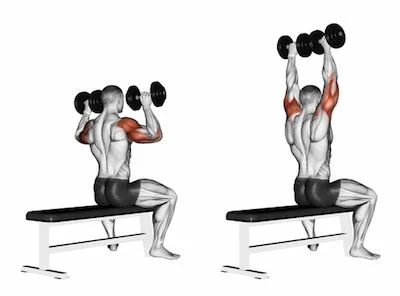
One of the best workouts for strengthening and increasing shoulder bulk is the dumbbell shoulder press. It enables you to raise a lot of weight by using several muscles at once. It focuses mostly on the triceps and anterior delts.
You can perform the dumbbell shoulder press while seated or standing. Since the sitting version isolates the shoulders and eliminates support from the knees and lower back, it is superior for developing shoulder mass. For muscle growth, eight to twelve reps is the most frequent rep range.
Using too-heavy weights during a dumbbell shoulder press is a typical mistake that some people make. Since the shoulder is a movable joint, attempting to perform really intense low repetitions is not advised. This is due to the increased risk of injury and the requirement for the shoulder joint to work harder to stabilize the arm.
How to do Dumbbell shoulder press
- Select a weight that will work for the number of repetitions you need. With your palms pointing ahead, raise each weight until the dumbbells are sitting on your shoulders or slightly above.
- Raise the weight above the head and make contact with the dumbbells above the head. Once the dumbbells are back on the shoulder, reduce the weight once more.
- Don’t forget to perform complete reps, which include going up and down. You will use more muscle fibers and develop more shoulder muscle mass the wider your range of motion.
- For the number of reps and sets you have selected, repeat the above instructions. Attempt to maintain the same weight throughout your exercise.
2. Dumbbell front raise
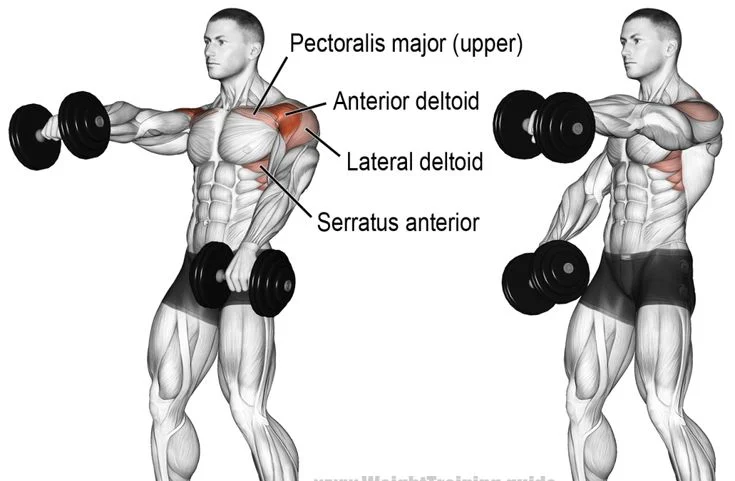
One of the best exercises for developing shoulder bulk is the dumbbell front raise. It’s an isolation workout that focuses mostly on the shoulder’s front head. Because isolation exercises concentrate more strain on a single area of the body, you may need to utilize smaller weights.
Anything between 10 and 20 repetitions can be performed when using a lesser weight. Avoiding momentum or swinging is one thing to do. To perform the exercise, you have to regulate each repetition and use your shoulder muscles.
How to do Dumbbell front raise
- Holding a set of dumbbells against your thighs with your hands facing inward, take a tall stance.
- Dumbbells should be raised one at a time in front of you until they are slightly above your shoulder line. With your hands toward the floor, your arm should be nearly straight yet with a soft elbow. The arm on the other side ought to be flat against your thigh.
- After a brief moment of holding at the peak, slowly descend back down. Next, raise your other arm and carry out the same motions.
- Try to complete 10 to 15 repetitions for each arm.
3. Dumbbell side lateral raise

The dumbbell side lateral rise is used to work the side of the shoulders, commonly known as the lateral head. The muscle that most affects how big the shoulder appears is this one. Moving the arm away from the body, or shoulder abduction, is the best approach to build this muscle.
Higher repetitions of this exercise can be achieved with medium-to-lightweight weights. Heavy weights make this exercise difficult, so concentrate on building muscle rather than pushing yourself to the limit.
You can perform this shoulder exercise while seated or standing. Seated exercise has the advantage of requiring less support from the lower back, which puts more strain on the shoulders.
How to do Dumbbell side lateral raise
- With your hands facing inward and your thighs adjacent, take a dumbbell in each hand and take a seat on a bench.
- Raise your arms out to the sides until your weights are parallel to the floor and your knuckles are in line with your shoulders. After a short period of time, hold this position at the top and gradually return the weight to the beginning position.
- Try to concentrate on your shoulder heads when working out; otherwise, the trap muscles may absorb some of the stress.
- Stand with your hands by your sides in the same manner as you would for front raises for the standing version of the exercise.
- Try to complete two or three sets of twelve to fifteen repetitions.
4. Dumbbell bent-over raise
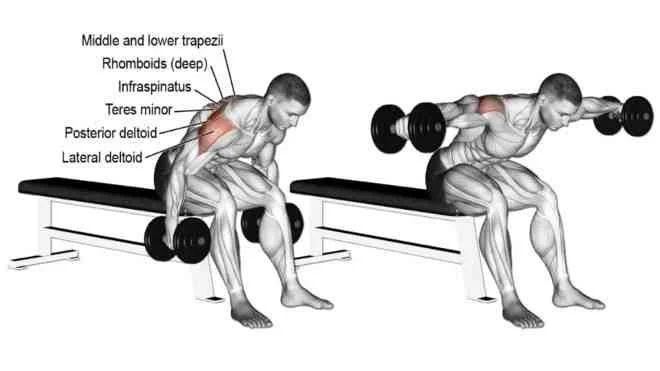
The posterior delts, which are found at the rear of the shoulder, are the focus of the dumbbell bent-over raise exercise. In comparison to the other shoulder muscles, this one will be underdeveloped in a lot of people.
However, you shouldn’t ignore your posterior delts if you want well-defined shoulders with lots of muscle mass.
You can perform this workout while seated or standing. Dumbbell bent-over raises can be performed with a lesser weight and more repetitions, just as front and side raise. If you’re just beginning out, don’t be surprised if you can’t utilize much weight because it’s usual for this muscle to be undeveloped.
How to do Dumbbell bent-over raise
- For the standing version, bend over until your body is almost parallel to the floor while maintaining a straight spine. You should not extend your neck upward and instead keep your head in a neutral position.
- With dumbbells in hand and your palms facing each other, you should extend your arms in front of you. Instead of being locked, the elbows should be relaxed and slightly bent.
- In a reverse fly motion, contract your rear delts and raise your elbows toward the ceiling. With your hands facing the ground, the weights should come to a near parallel position with the ground.
- Throughout the exercise, maintain your core engaged and your torso still.
- Try to complete two or three sets of twelve to fifteen repetitions.
5. Dumbbell upright row

Your shoulders or traps can be worked with the dumbbell upright row, depending on how wide or narrow you keep your elbows during the exercise. Your traps will be worked more during the exercise the closer you keep your hands together. The side delts are worked more when they are kept wider.
Because this is a complex workout, you can utilize larger weights.
How to do Dumbbell upright row
- With the weights resting on the front of your thighs and your palms pointing down, pick up a set of dumbbells and stand upright.
- Keeping the palms toward the floor, raise the hands and elbows while activating your shoulder muscles.
- The weights in your hands should face forward and be in line with your shoulders at the peak of the exercise when your muscles are fully clenched. The elbow and shoulder should nearly form a 90-degree bend.
- Take a moment to hold this posture, then slowly move back to your starting position.
- Keep the weights closer together inside the thighs to target the traps more.
- Get three sets of eight to twelve reps.
6. One-arm dumbbell swing

This workout is a single dumbbell variation of kettlebell swings. The extra calories that this will burn by raising your heart rate are an added bonus.
How to do
- Dumbbells should be held between your legs at arm’s length.
- As you lower yourself into a squat, swing the dumbbell through your legs. Then, as soon as you straighten your legs, propel yourself forward and raise the dumbbell to your head.
- After doing this motion again, switch sides.
7. See Saw Press
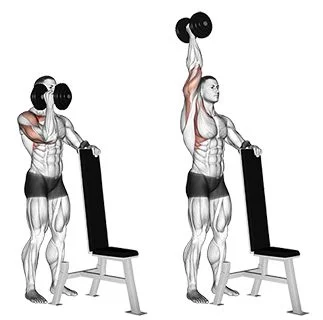
You can practice with bigger kettlebells overhead with the double kettlebell see-saw press because they won’t be above your head at the same time. This exercise helps to develop structural integrity and works your entire upper body.
How to do See Saw Press
- With your palms facing ahead, hold two dumbbells slightly behind your shoulders.
- Lift your gaze, slant your torso to the left, and raise your right arm straight up above your head.
- To make a see-saw motion, lower the dumbbell and repeat on the opposite side.
- One rep is the same as doing the exercise with both arms.
8. Dumbbell shoulder shrugs

There’s no better way to tone your neck and traps than with dumbbell shrugs. Although dumbbell shrugs are quite easy to execute, form and technique are crucial.
Choosing an excessively heavy weight for this exercise is a common mistake made by participants. Ignoring the entire range of motion, one of the most crucial training components is another typical error.
Training with dumbbell shrugs can be done in a wide range of repetitions, ranging from 6 to 15.
How to do Dumbbell shrugs
- Grasp a dumbbell in each hand and place the weights by your thighs, slightly apart from your hips.
- With your elbows loose and not locked out, your arms should be fully extended. Shrug your shoulders up toward your ears and use your traps to raise the dumbbells as high as you can. Before lowering them back to the beginning position, hold for a little moment.
- Do not thrust your head forward. Although this is a typical error, the movement is shortened and becomes less powerful as a result.
- Keep your core active and repeat.
- Try to complete two or three sets of eight to twelve repetitions.
Dumbbell Shoulder Workout
| Exercise | Sets | Reps |
|---|---|---|
| Dumbbell shoulder press | 3 | 10-12 |
| Dumbbell front raise | 3 | 10-12 |
| Wide grip dumbbell upright row | 3 | 10-12 |
| Dumbbell upright row | 3 | 10-12 |
| Dumbbell side lateral raise | 3 | 10-12 |
| Dumbbell shrug | 3 | 12-15 |


